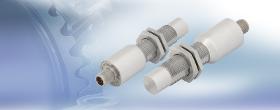- europages
- >
- COMPANIES - SUPPLIERS - SERVICE PROVIDERS
- >
- sensor for seals
Results for
Sensor for seals - Import export

QUELLTECH GMBH
Germany
Particular Challenges: The seal surfaces in this case are made of very glossy metal, with the drawback of emitted reflections. This effect during an optical measurement must be eliminated. Furthermore, it is absolutely necessary to guide the laser scanner on a linear path over the surface, since fluctuations of distance may falsify the measurement result. QuellTech Solution: The Quelltech model Q5 disposes of an adequate resolution in X and Z direction and proves to be able to verify the planarity tolerances and to measure the size of defects. Meanwhile a precise rotary axle, used as guiding element, moves the scanner over the surface to be evaluated. Interfering artefacts caused by the glossy finish are suppressed by particular algorithms integrated within the software. As an encoder value is permanently supplied by the rotary axle, the position of each scanner profile within the point cloud can accurately be determined.
Request for a quote
MICRO-EPSILON
Germany
Sensors can be adapted to suit customer-specific applications. Particularly for a large number of pieces, customized sensors can be produced efficiently, which results in considerable cost reductions. The compact PCB which contains the sensor element and the evaluation electronics is responsible for the signal preparation, signal evaluation and signal output. The type of measurement (distance or rotational speed measurement) and the required frequency response are adaptable. In addition, the interfaces offer numerous connectivity options. There are several outputs such as current, voltage, PWM and further digital outputs. The design of the housing, the material and the protection class can be adapted to the specific requirements. In cases where space is limited, the side shifted measurement offers a space-saving alternative. For harsh environments, the sensor is designed with a fully sealed stainless steel housing that withstands high pressure, dirt, aggressive chemicals (acids)
Request for a quote
COMPUR MONITORS GMBH & CO. KG
Germany
Statox 501 Infratox detects gases in the LEL and ppm range. Protecting people and assets from hydrocarbons The infrared absorption method of gas detection is ideal to detect hydrocarbons such as fuels. It features enough sensitivity to expand the range of application into the ppm range. For instance fuels such as gasoline, diesel or kerosene are mixtures of hydrocarbons. Infrared gas detection theory of operation Some gases absorb light at a certain wavelength (colour). This absorption band is specific to the gas. The rate of the absorption depends not only on the substance to be detected but also on the number of gas molecules (i.e. the concentration of the gas). This premise is used to detect gases. For example, the C - H bond in hydrocarbon molecules will oscillate and absorb light at 3, 4 mm. This fact makes it so easy to detect fuels. Hexane, for instance has 14 C - H bonds compared to Methane which has only 4! A light beam is directed through a cuvette filled with the gas to be detected. The more hydrocarbons are present, the more light will be absorbed. A photo detector at the other end of the cuvette measures the remaining light intensity. The difference between the original and remaining light intensity corresponds to the gas concentration. A reference beam with a different wavelength compensates for potential interferences of dust, humidity or variations of intensity from the light source. Fail-safe technology Failure of important components such as the light source or photo detector will trigger a "system fail" alarm. Most local authorities will accept this as a self-diagnostic feature. Systems including a self-check require less maintenance and calibration, saving time and money. Simple maintenance: Easy to read display and non-Vintrusive calibration The bright LED display of the Statox 501 Infratox shows the gas concentration in percent L.E.L. (Lower Explosion Limit). An important accessory is the calibration adapter, featuring control buttons operating Hall-sensors inside the Ex d housing. The service menu is password protected preventing unauthorised access. All parameters can be checked and changed, or a calibration can be done all without opening the transmitter. The adapter is also equipped with a gas outlet so that it can be used for flow-through applications. Impervious compact design The dimensions of the Statox 501 Infratox are small and compact. The sensor compartment is completely sealed, not allowing dust or insects to enter. It is located in the center of the sensor head. This allows heat radiation from the electronics and the infrared lamp to keep the unit a few degrees above the ambient temperature thus avoiding condensation. This innovative design makes any additional heating unnecessary, allowing the sensor head to be very energy efficient. This saves additional money by eliminating more expensive wiring and a bigger power supply that would otherwise be necessary. The sensor head is rated protection class IP 67 (6 = protection even against fine dust, 7 = submerged 1 m deep in water for 30 minutes). You can have confidence that this system will safely operate even in the harshest environment.
Request for a quoteDo you sell or make similar products?
Sign up to europages and have your products listed
Results for
Sensor for seals - Import exportNumber of results
3 ProductsCountries
Company type